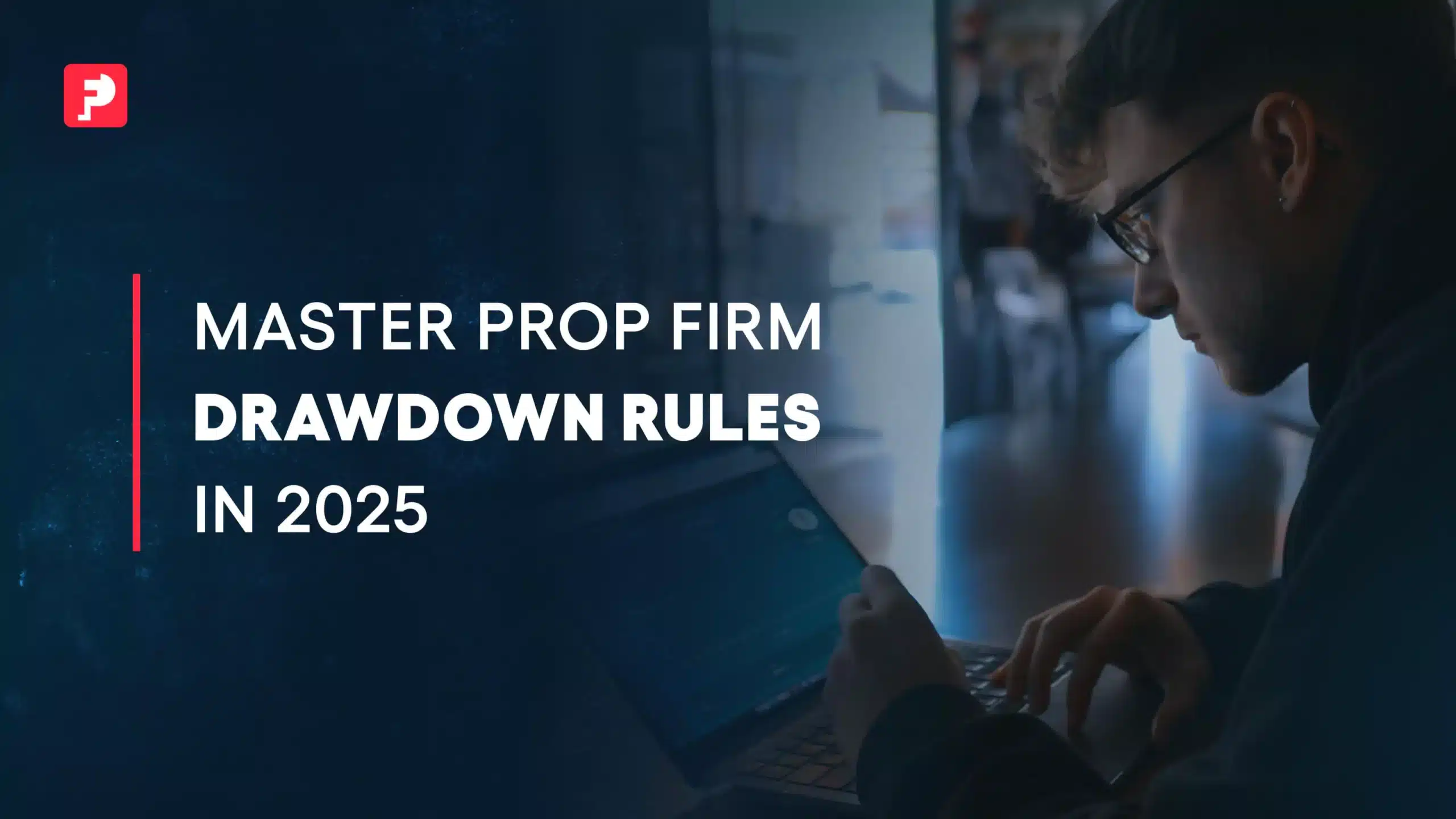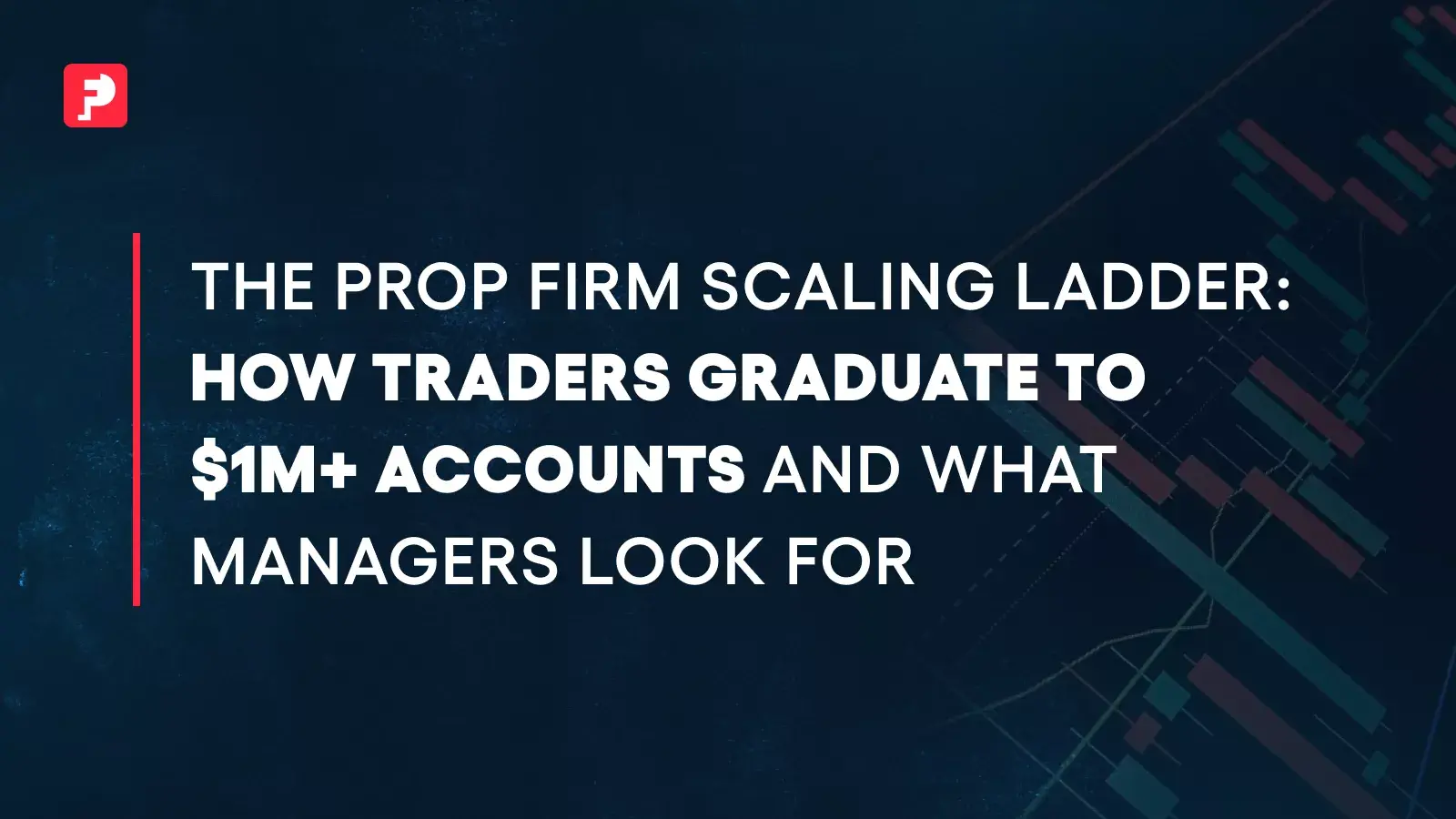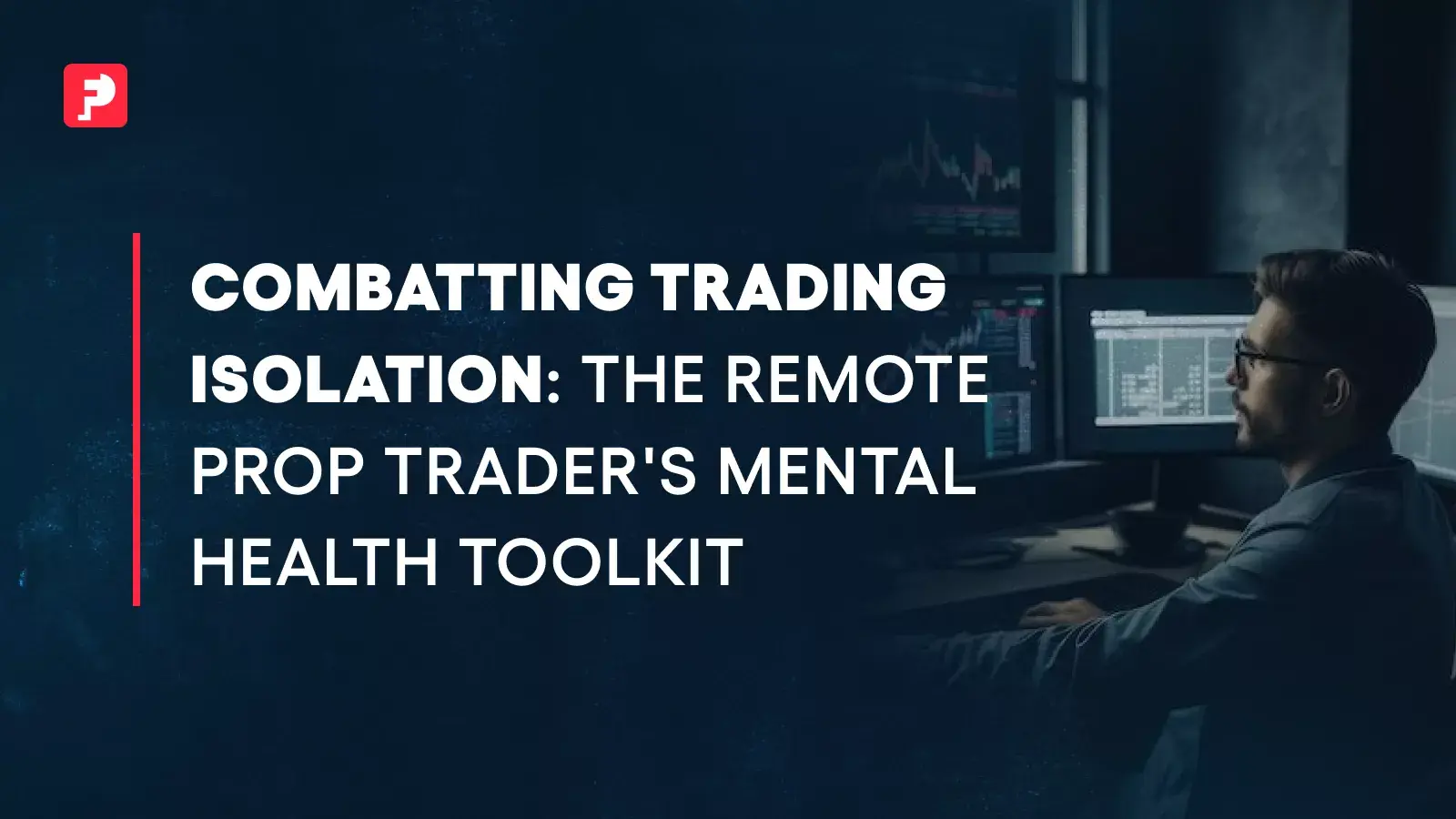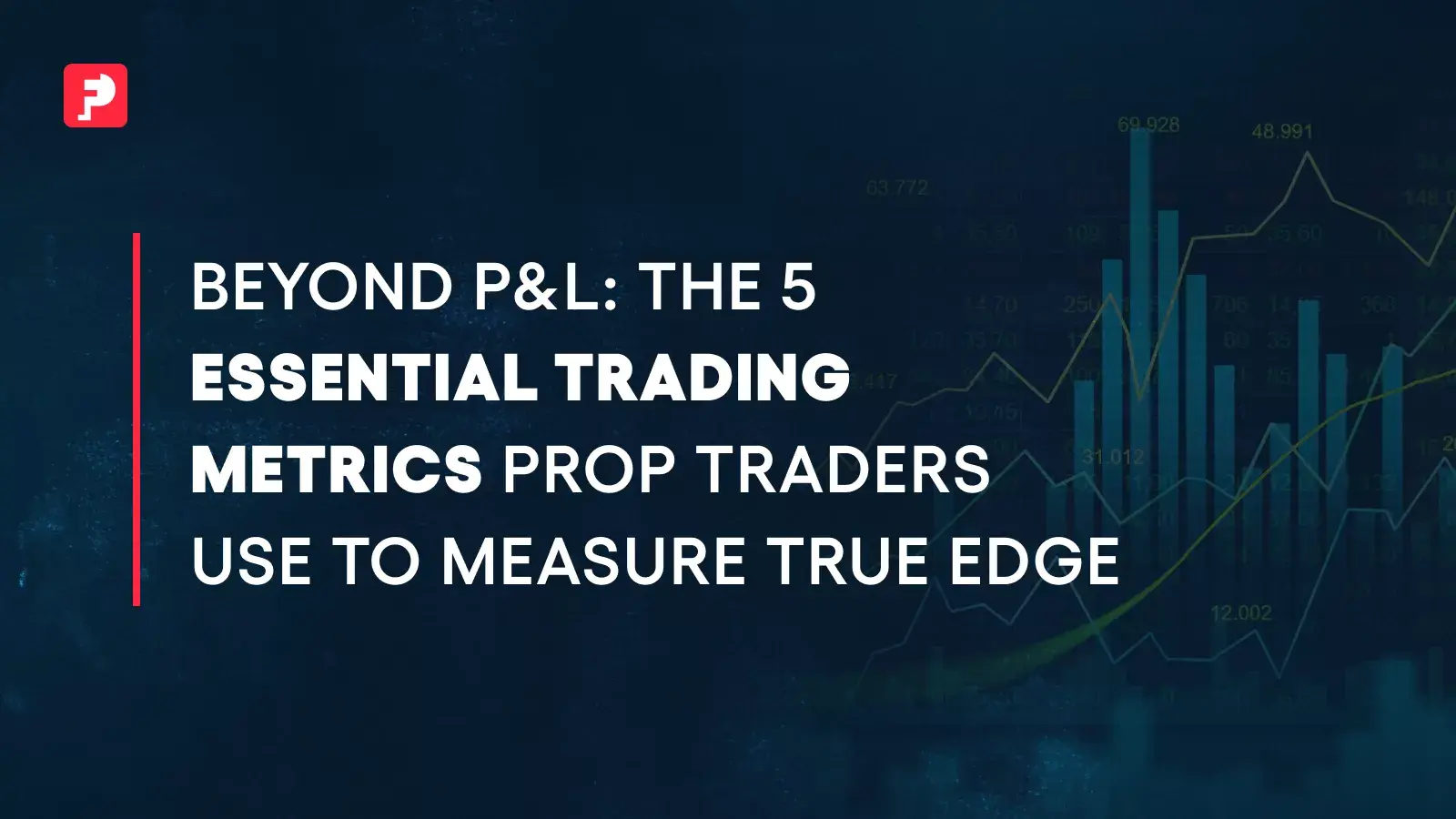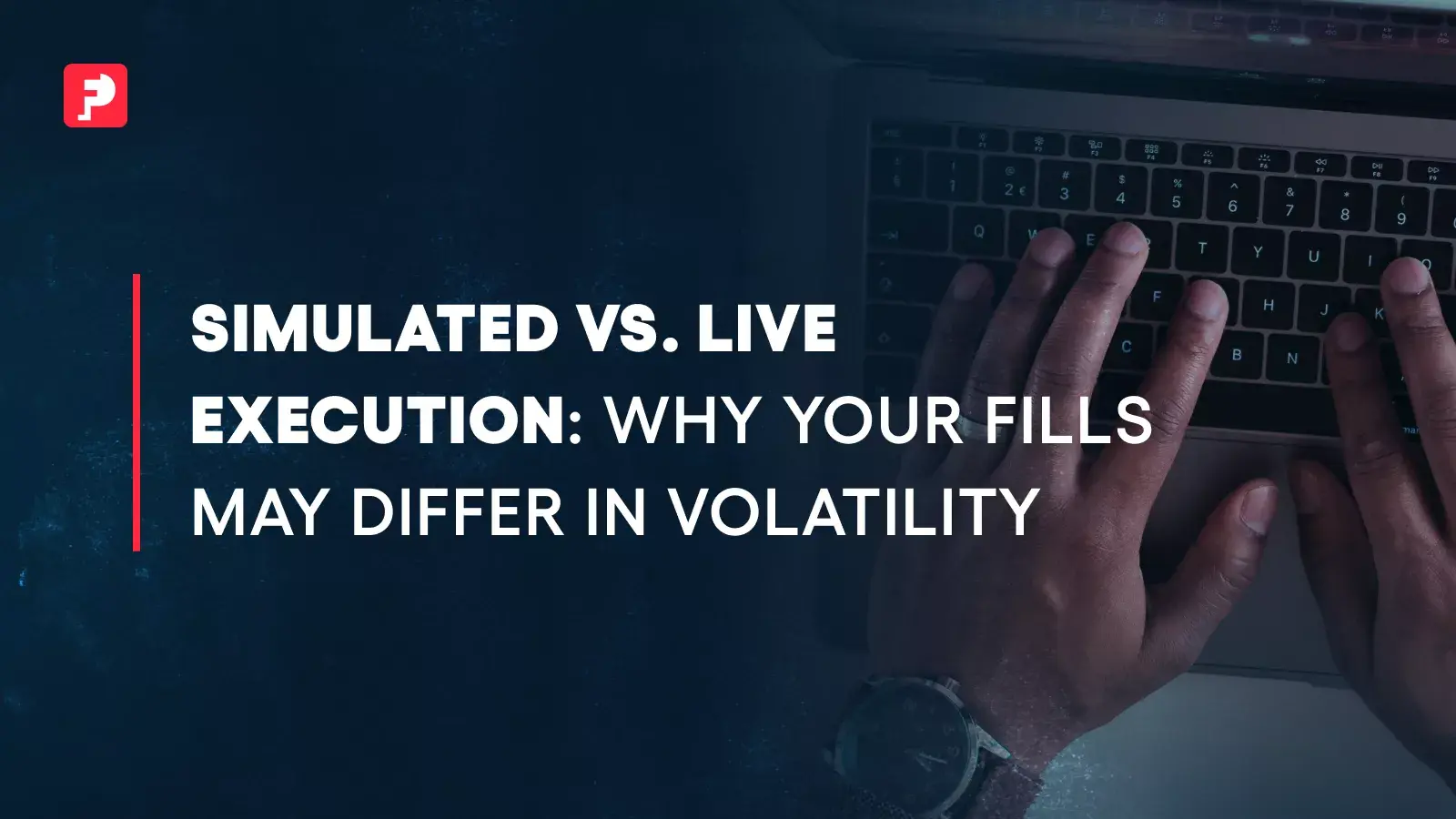You have passed your prop firm challenge, your funded account is live, and every trade now feels like it carries extra weight. But one sharp market swing can erase weeks of work, ending your journey in seconds.
This scenario is common for traders who do not fully understand their firm’s prop firm drawdown rules. In this guide, we will break down how drawdown works in prop trading, why it is a defining factor for long-term success, and the steps you can take to manage it effectively.
By the end, you will know how to protect your capital, stay within your firm’s limits, and approach every trade with confidence rather than hesitation.
Understanding Your Prop Firm’s Drawdown Rules
Drawdown represents the maximum loss your account can take before it is closed. Most prop firms apply two main types:
- Daily Drawdown – The maximum loss allowed within a single trading day.
- Overall Drawdown – The maximum total loss allowed over the life of the account.
Beyond these, firms may use fixed drawdown, trailing drawdown, or an equity-based calculation instead of a balance-based one. Knowing exactly which applies to your account is essential for effective funded account risk management.
Example: Daily Drawdown
If your daily drawdown limit is 5% on a $100,000 account, you cannot lose more than $5,000 in that day. Even if you later recover the loss, breaching the limit by even $1 at any point will result in account closure.
Common Drawdown Types
| Drawdown Type | Description | Example Limit |
|---|---|---|
| Fixed Drawdown | The limit remains constant from day one. | $5,000 |
| Trailing Drawdown | The limit moves up as your account gains. The trailing stop is set at a fixed distance from your highest balance. For example, on a $100,000 account with a $5,000 trailing limit, if your balance reaches $101,000, the limit rises to $96,000. If your balance then drops back to $100,000, the limit stays at $96,000. | $5,000 start → $96,000 after $1,000 gain |
Equity-Based vs Balance-Based Drawdowns
This distinction catches many traders off guard.
- Balance-Based Drawdown – Calculated from your balance (realised profit or loss). If you recover losses before closing positions or letting your equity fall below the max drawdown limit, your account remains safe. Swing traders often prefer this method.
- Equity-Based Drawdown – Includes both realised and unrealised P/L when calculating the drawdown.
Example: $100,000 account with a $5,000 daily drawdown limit.
- Balance-based: Your balance is $100k at the start of the day, and the next day you have an open P/L of $102k. Your daily drawdown will still be $95k, not $97k.
- Equity-based: Given the same situation as above, your daily drawdown would be $97k.
Position Sizing to Stay Within Limits
Knowing your drawdown number is one thing; trading within it is another. Here’s a step-by-step approach:
- Know your limits – Convert your drawdown into pips or points for your preferred instruments.
- Risk per trade – Keep this between 0.5% and 1% of account size to allow multiple losing trades without reaching limits.
- Factor in spread and slippage – Especially during volatile sessions or high-impact news events.
- Use stop-loss orders – Avoid emotional exits and protect capital automatically.
Common mistakes to avoid:
- Increasing position size after a loss to recover quickly (overleveraging).
- Ignoring open trade drawdown when near your limit.
- Forgetting that overnight gaps can skip stop-loss orders and breach limits.
Discipline and Mindset Under Pressure
Even with a clear understanding of prop trading limits, emotions can break rules faster than market volatility. Funded traders must think like risk managers first and traders second.
Key practices:
- Set a maximum number of trades per day.
- Stop trading after reaching a preset loss threshold, ideally well before the firm’s limit.
- Keep a trading journal to identify and correct repeated errors.
As the saying goes, “Protecting your account is your first job; making profit comes second.”
Advanced Tip: Risk to Reward Ratios
A healthy risk to reward ratio keeps you comfortably clear of drawdown thresholds.
Example: Risking $500 to make $1,000 allows you to remain profitable with a win rate as low as 40%. This eases psychological pressure and supports consistent trading discipline.
For a clear definition and examples, see Investopedia’s Risk to Reward overview. For a deeper look at trading strategies, see our Dynamic Risk Management for Prop Traders guide.
Conclusion
Prop firm drawdown rules are not there to restrict you; they are designed to help you survive long enough to demonstrate skill and consistency. By understanding how your firm calculates drawdown, managing position sizes effectively, and maintaining discipline under pressure, you can protect your funded account and trade with confidence.
If you are ready to put these principles into practice, start your FunderPro Challenge today and trade with the same discipline used by professional-level traders.
